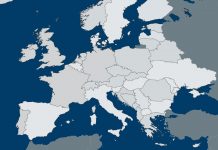Originally produced on May 22, 2017 for Mauldin Economics, LLC

By George Friedman
From its founding, the Soviet Union conducted campaigns designed to destabilize and neutralize potential enemies.
After the Russian Revolution, Lenin founded the Third International to support Communist parties around the world. Soviet intelligence ran disinformation campaigns designed to undermine national governments, to discredit leading figures, and so on.
After World War II, the campaigns intensified. The Soviets claimed that the United States was using germ warfare during the Korean War. They used the global movement against the US war in Vietnam to recruit potential operatives and to destabilize US-led alliances.
During the 1970s, the Soviet Union also supported European terrorist organizations like the Italian Red Brigades and the German Red Army Faction, which carried out assassinations, kidnappings, bombings and the like.
The United States, of course, ran its own campaigns intended to weaken the Soviet Union and its allies. From the beginning of the Cold War, the US recruited emigres from the Soviet bloc to try to foment uprisings in the East. It broadcast pro-Western propaganda in various languages into the bloc. And the US supported different groups of people (such as Poland’s Solidarity or Jews in the Soviet Union) who wished to flee the USSR.
After the Cold War ended, the US supported human rights and democracy movements in the former Soviet republics. The Russians believed that the Americans’ true intent was to install pro-American governments in the republics and encircle Russia with hostile nations, armed by the United States and open to the basing of US troops.
The breaking point for the Russians came in 2004 with the Orange Revolution in Ukraine. The Russians valued Ukraine for its role as a buffer state, and in their eyes, the only interest the US could have in Ukraine was to make the Russian position untenable.
Tried and True Tactics
So the Russians, now led by Vladimir Putin and many others who began their careers in the KGB, began increasing their destabilization efforts all over the world. (Putin himself served in East Germany and had a front row seat to many of the Soviet Union’s European operations.) They constructed an ideology vaguely built around Christianity in lieu of Marxism and used it to strengthen right-wing parties and governments against the United States. The ideology was new, but the strategy was still based on the principle that the greater the dissension in a country, the weaker it would be… and thus, the more secure Russia would be. Trying to reshape other countries by focusing on disinformation and financial aid for right-wing parties was logical, particularly after oil prices collapsed and insecurity swelled in Russia.
Sowing distrust was at least as important to the Russian campaign as was whether the activities themselves worked. Having allowed it to leak that they were engaged in these activities, the Russians left it deliberately uncertain as to who was under their influence and who wasn’t. This was a tremendous force multiplier since the uncertainty made everyone suspect, and all actions were viewed through the lens of Russian operations. Even if no one in a country was under Russian control, the mistrust itself was a victory.
Consider the most famous example: In the US, Donald Trump may or may not have had contact with the Russians, but that doesn’t matter for Russia’s purposes. By merely being able to raise the possibility, the Russians have succeeded in destabilizing the system.
The Illusion of Power
The problem with this strategy when it was employed by the Soviets was that it never actually worked—or, more precisely, the desired outcomes might have been achieved, but Soviet power was only minimally supported and the great strategic matters were unaffected. In World War II, first, Hitler crushed all such operations in the first days of his regime, and second, Soviet intelligence failed to foresee (or Stalin refused to understand) the coming invasion.
During the Cold War, in spite of real success in its destabilization campaign, the Soviet Union fell… not the United States. The reason was simple. As an adjunct to real power, these tactics can be useful. As a substitute for real power, however, they are wholly inadequate.
Soviet “agitation and propaganda,” as it was often called, was quite successful before World War II. But it did not prevent war from breaking out, nor was it important in the Allies’ victory. That depended on more powerful tools like tanks and planes.
Similarly, in the Cold War, Soviet destabilization efforts were quite successful, but it didn’t matter. US containment strategy constantly had the Soviets strategically on the defensive. The Soviet Union collapsed because its economy and structure could not sustain itself, and no amount of terrorist groups in Europe could change that.
The Russians tend to ramp up covert operations designed to destabilize as a substitute for real power, whereas the United States uses it as an adjunct to power. Take Ukraine for example. Faced with a weakening economy and the growth of US power to its west, Russia can’t really do anything to change the situation in Ukraine. Instead, it must resort to covert efforts to destabilize Europe and the US.
The KGB men who now lead Russia and who achieved tactical success during the Cold War are comfortable with this tactic. But they forget that its successes were ultimately irrelevant and illusory. As a primary thrust, it has never worked. It can confuse and buy time, but it doesn’t change the fundamental realities of power. In the end, military and economic power cannot be compensated for by manipulation.






 Special Collection – The Middle East
Special Collection – The Middle East